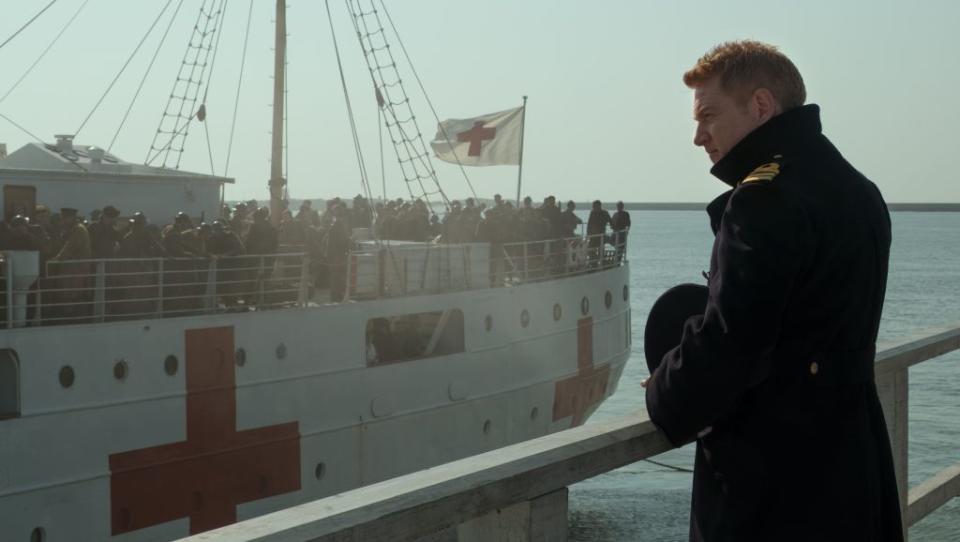Christopher Nolan’s “Dunkirk” is a brilliant tribute to cross-border cooperation in a time of nativism

You don’t see many French troops in Christopher Nolan’s Dunkirk, but their presence in the World War II epic is felt from the first bullet to the final bomb.
In 1940, the entire British Expeditionary Force, along with thousands of French and Belgian soldiers, were trapped on the beaches of Dunkirk, France, as the German army surrounded them. The White Cliffs of Dover were just 25 miles across the English Channel, but the Allied troops had no way of getting there. So the British Royal Navy commandeered hundreds of private boats (including ships from Belgium and the Netherlands) to cross the channel and ferry the British and part of the French armies to safety, as the Royal Air Force kept watch from above.
More than 30,000 French soldiers stayed behind to fend off the advancing Germans, an act which allowed the miracle evacuation at Dunkirk to happen. Afterward, British prime minister Winston Churchill credited his French comrades with helping save Britain.
Dunkirk‘s opening scene shows a young British soldier elude a group of German soldiers and take safety behind sand bags manned by the French. As he frantically runs toward the beach to join the rest of the British forces, the French soldiers stay behind and continue fighting.
Nolan may not have intended for his film to be political, but it is nonetheless, simply by virtue of the story it depicts. The timing of the film’s release is inescapably political as well, as the United Kingdom prepares to withdraw from the European Union—and thus from countries that helped it survive the Second World War.
“The British Empire and the French Republic, linked together in their cause and in their need, will defend to the death their native soil, aiding each other like good comrades to the utmost of their strength,” Winston Churchill said in his famous “We shall fight on the beaches” speech to British parliament the day the evacuation ended. Some British officers argued the French shouldn’t have been included on British rescue boats (also depicted in the film), but Churchill insisted they were.
And so, in one of the final moments of Dunkirk, as the last British boats leave the beaches, the Royal Navy commander (played by Kenneth Branagh) who had been leading the British evacuation, says he’s not going anywhere just yet. “I’m staying for the French,” he says.
Nolan’s film is neither perfect nor perfectly historical. Some French filmgoers complained that Dunkirk minimized French involvement in the evacuation. Others pointed out that the Royal Indian Army Service Corps, who were also present on the beaches of Dunkirk, were nowhere to be seen in the film.
Nolan has said his film was intended to be a stripped-down survival story, one in which the characters have no motivations (nor backstories) apart from wanting to survive. He approached it “from the point of view of the pure mechanics of survival rather than from the politics of the event.”
While the film probably could have done more to portray the non-British nationalities of the British Empire, the film itself—that is, its production—was a colossal global partnership in its own right.
Lee Smith, the film’s editor, is Australian. Its composer, Hans Zimmer, is German. Its cinematographer, Hoyt van Hoytema, is Dutch. Nolan himself is the product of a global upbringing—he was born in London to a British father and an American mother, and spent much of his youth in Chicago (where he returned in 2008 to film his most famous movie, The Dark Knight).
At the suggestion of van Hoytema, Nolan filmed a crucial scene in Dutch waters. The rest of the naval and beach scenes were filmed in France, in the real location where hundreds of thousands of soldiers were evacuated almost 80 years earlier. Some scenes were also shot at a studio in Los Angeles.
The film used surviving vessels from nine different countries, including three Royal Netherlands Navy ships and a French destroyer which had been serving as a museum ship since 1991. Soviet aircrafts were made to look like the legendary Spitfire of the British Royal Air Force. A Spanish plane stood in for one from Germany’s Luftwaffe.
Opening a year after the UK narrowly voted for Brexit, Dunkirk is simultaneously a celebration of British patriotism and an appeal for collaboration with your global neighbors—and a reminder that the two ideals are not, and have never been, mutually exclusive.


Sign up for the Quartz Daily Brief, our free daily newsletter with the world’s most important and interesting news.
More stories from Quartz:
